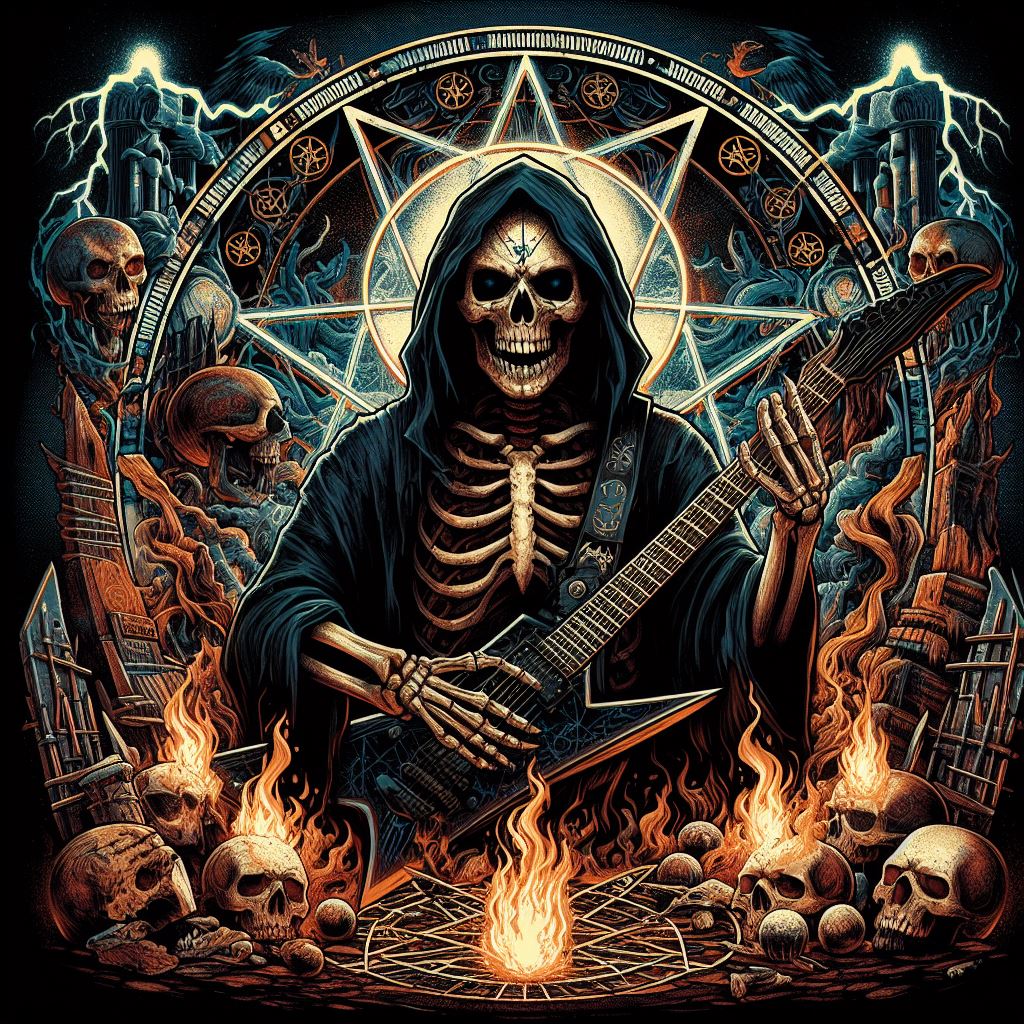Black metal music has long been associated with the extreme right, drawing on occult, pagan, and racist themes. This connection traces back to the National Socialist German Workers’ Party and has resurfaced in recent years with the rise of racist occultism and heathenry among far-right groups. Mainstream heathen organizations are alarmed by this trend and are taking action to combat the appropriation of their religion by extremists.
Notably, violent acts committed by individuals with far-right ideologies have been linked to themes prevalent in black metal music. For instance, Anders Breivik, responsible for the 2011 Norway attacks, identified as an Odinist, while James Alex Field, involved in the Charlottesville incident, displayed symbols associated with Nazi ideology. The disturbing trend of violence influenced by extremist worldviews has prompted concerns about the role of online platforms in spreading hate speech.
Black metal, characterized by its extreme and atmospheric sound, emerged in the UK with bands like Venom and later gained notoriety in Norway during the 1990s with church burnings by Varg Vikernes. The genre’s influence has expanded globally, with bands adopting pseudonyms, wearing corpse paint, and incorporating themes of war, death, and fantasy. While some black metal artists embrace Satanic imagery, others reject Nazi ideology and emphasize a critique of modern society.
Winterfylleth, a UK black metal band, acknowledges the influence of extremist bands like Burzum but distances themselves from their ideologies. The group’s shift towards a more folk black metal style reflects a concern for preserving English national identity. Similarly, bands like Forefather celebrate their Anglo-Saxon heritage, blending Germanic influences with English heathen themes in their music.
While not all black metal enthusiasts align with fascist or Satanic beliefs, the genre’s subgenres like national socialist black metal (NSBM) promote racist and extremist ideologies. NSBM bands, originating mainly in Ukraine and Scandinavia, combine fascist elements with pagan symbolism to spread hate and radicalize listeners. The genre’s violent messaging and global reach have raised concerns about its potential to influence a wider audience.
Furthermore, related music scenes like neofolk have also faced issues of far-right infiltration, with some bands incorporating Nazi imagery and themes into their music. However, there are anti-racist neofolk bands that aim to counter extremist narratives and promote inclusivity. The debate surrounding the intersection of music, politics, and extremism underscores the need for vigilance in monitoring and addressing instances of prejudice within these genres.
As scholars and experts continue to explore the cultural and political implications of black metal and related genres, it becomes evident that these music scenes are not just forms of entertainment but platforms that can shape ideologies and influence societal beliefs. The ongoing discourse on the far-right’s presence in music underscores the importance of understanding the complex interplay between artistic expression, historical narratives, and extremist ideologies.
📰 Related Articles
- Tuska 2014 Festival: Metal Diversity Shines Amid Black Metal
- Trivium’s Matt Heafy & Ihsahn Unveil Japanese-Inspired Black Metal Album
- Sith’ari Unleashes Debut EP ‘Before The Dawn’ with Melancholic Black Metal Fusion
- Marduk Guitarist Reveals Surprising Persona Beyond Black Metal Stereotypes
- Immortal: Pioneers of Norwegian Black Metal

